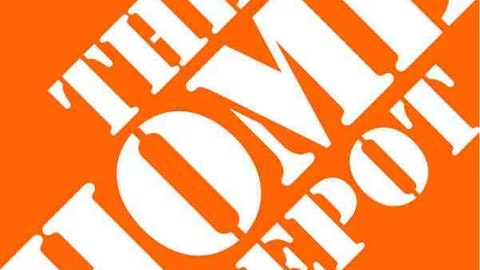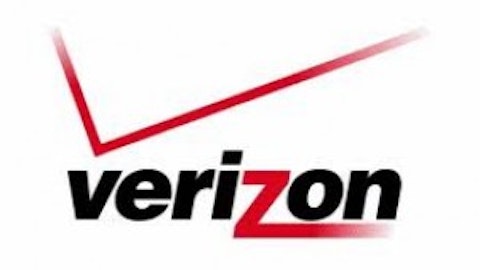One group of companies which were hit particularly hard by the housing crisis were the home improvement companies, specifically The Home Depot, Inc. (NYSE:HD) and Lowe’s Companies, Inc. (NYSE:LOW). But as the housing market comes roaring back, these companies should be two of the greatest beneficiaries. How do you decide which stock is superior? Well, there are two steps to that process.
An operational comparison
Before looking at the valuations of each company it’s important to compare how the companies actually achieve their respective returns. One number that we could look at is the return on equity, but this single number isn’t enough. What we need to do is break down this value into its component parts, thus painting a clearer picture of each company’s operations. I’ll do this via a DuPont analysis.
What’s a DuPont analysis?
In the 1920’s the DuPont Corporation developed what became known as the DuPont analysis, a technique which uses basic accounting identities to break down the return on equity into either 3 or 5 component parts. I’ll be using the more detailed 5-component version. The basic equation is below:

This equation is an identity because everything on the right-hand-side cancels out except Net income divided by Equity. Each of the five items is a component which, when multiplied together, yields the ROE.
- Net income/EBT – This is the company’s tax burden, or the proportion of a company’s earnings which remain after taxes. 100% would mean the company paid no taxes, while 0% would mean all EBT went to taxes.
- EBT/EBIT – This is the company’s interest burden, or simply the percentage of EBIT remaining after interest is deducted. 100% would mean that the company paid no interest, while 0% would mean that all EBIT went to interest payments.
- EBIT/Sales – This is the operating income margin, or return on sales.
- Sales/Assets – This is the asset turnover, which represents the revenue as a percentage of assets. This can be over 100%.
- Assets/Equity – This is the leverage ratio. The higher the number, the more leverage the company is using. A value of 1 represents no leverage.
By comparing these 5 numbers over time we can see what the driving force behind the ROE has been. And by comparing companies we can see exactly how they generate their ROE.
The calculation
Here’s all of the data required for the calculation for both The Home Depot, Inc. (NYSE:HD) and Lowe’s Companies, Inc. (NYSE:LOW):
Home Depot

Lowe’s

Data from Morningstar
One note: since the calculations mix values from the income statement and the balance sheet, and the balance sheet is a snapshot from the end of the year, I’ll take the average of the beginning-of-year and the end-of-year values for the balance sheet items. Here are the results:
Home Depot

Lowe’s

What does it all mean?
The first value from the results, the return on equity, shows a huge discrepancy between the two companies. In 2012 The Home Depot, Inc. (NYSE:HD) managed a 25% ROE, while Lowe’s managed an ROE of roughly half of that value. How are two companies that are so similar on the surface so different in terms of execution?
Thankfully, the DuPont analysis can answer that question. The tax burden of each company is about the same, as is the interest burden. But the interest burden does show a trend of The Home Depot, Inc. (NYSE:HD) paying less interest and Lowe’s paying more. Indeed, Lowe’s has increased its debt levels considerably over the past five years, while Home Depot has held its debt levels essentially constant. This gives Home Depot a bit of an advantage.
It starts to get interesting when we look at the EBIT margin. Since 2009 The Home Depot, Inc. (NYSE:HD) has been constantly improving this value, growing it from 7.26% to 10.39% most recently. Lowe’s, on the other hand, has been unable to boost its EBIT margin at all. In fact, Lowe’s best year in regards to this margin is barely higher than Home Depot’s worst year.
The second big difference is the asset turnover. This is a measure of how efficiently each company is using its respective assets to generate sales, and it seems that The Home Depot, Inc. (NYSE:HD) is not only better than Lowe’s in this area but is also improving at a faster pace. Again, Home Depot’s worst year is better than Lowe’s Companies, Inc. (NYSE:LOW) best.
It’s mainly these two things, the EBIT margin and the asset turnover, that lead to Home Depot’s enormous ROE compared to Lowe’s. It seems that Home Depot is simply a better run, more efficient company which is actually becoming even better with time as Lowe’s is stuck in the mud. Home Depot’s return on assets is also about twice that of Lowe’s, right in line with the ROE.
Operationally, there is no real comparison here. Home Depot is superior in basically every way, and by a huge margin to boot.
Comparing valuations
Now we come to valuations. In 2012 Home Depot recorded an EPS of $3.00, putting the current P/E ratio at about 26. Lowe’s, on the other hand, recorded an EPS of $1.69 for a P/E ratio of about 24.
The companies trade at very similar P/E ratios, even though Home Depot is both operationally superior and growing faster. Home Depot has grown its revenue by 13% since 2009, while Lowe’s has grown its revenue by just 7% during the same time. Home Depot has increased its net income by 70% since 2009 compared to Lowe’s barely 10% increase.
It’s important to remember that this growth is from the depths of the housing crisis. Home Depot is actually still a long ways away from its peak revenue and net income from 2006. And given that there’s not likely much more room to grow the margins for Home Depot revenue growth will start to become the main driver. This will lead to slower earnings growth than the past four years, although the housing recover should drive revenue higher.
Lowe’s is clearly overvalued compared to Home Depot, but there’s a turnaround possibility here. What if Lowe’s becomes just as efficient as Home Depot? This would knock the P/E ratio down to around 16, much more attractive than the current value of 24. The problem is that Lowe’s doesn’t seem to be making progress, with the most recent earnings report showing flat sales and missing estimates on all fronts. So for now it seems that Home Depot is the best choice.
The bottom line
Both stocks look expensive, but if you have to buy one Home Depot should be that one. The forward P/E ratio based on the average analyst estimate is a more reasonable 21, but it’s still difficult to pay that much for the stock. Operationally Home Depot leaves Lowe’s in the dust, with a ROE and ROA twice as big and improving each and every year. It’s hard to justify buying Lowe’s except for the turnaround possibility, but that isn’t a very compelling argument based on the progress being made. Home Depot is putting itself in the position to be the dominant home improvement company for years to come, and there’s little that Lowe’s is doing to stop it.
Timothy Green has no position in any stocks mentioned. The Motley Fool recommends Home Depot and Lowe’s. Timothy is a member of The Motley Fool Blog Network — entries represent the personal opinion of the blogger and are not formally edited.
The article The Best Home Improvement Stock originally appeared on Fool.com is written by Timothy Green.
Copyright © 1995 – 2013 The Motley Fool, LLC. All rights reserved. The Motley Fool has a disclosure policy.




